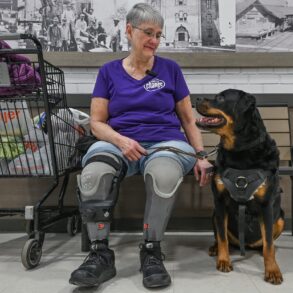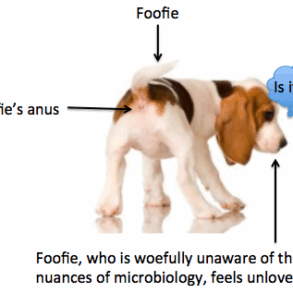
Dogs have been at our side for centuries, and many of us believe they catch on to much of what we say. Some animal lovers have turned to special devices that supposedly help dogs “speak.” Yet, recent scientific findings hint that these gadgets might not work as well as people hope.
At Eötvös Loránd University in Budapest, researchers in the Department of Ethology set out to see whether certain recorded words truly register in a dog’s mind. Dr. Tamás Farago explained that these study results highlight how audio fidelity plays a key role in canine word recognition.
Dogs hear more speech frequencies
Dogs hear a wider band of frequencies than humans do. Their range starts near 65 Hz and stretches to around 45,000 Hz, while people typically only reach about 20,000 Hz.
This difference means that when we play recorded speech to dogs, equipment quality matters. If important sonic details go missing, dogs may seem confused or unresponsive.
Many devices are built for humans. They often focus on our usual speech range, between 300 Hz and 3,400 Hz, without going too high. That might help with phone calls or podcasts, but it leaves out some of what dogs may need to pick up on words.
Dogs struggle to hear poor audio
Researchers tested different ways of delivering recorded words, comparing common tools like phone-linked speakers and “talking” buttons. Their study revealed that poor sound quality from certain devices undercuts a dog’s ability to act on those recorded commands.
“The frequency analysis showed that the loudspeaker preserves most sound frequencies of the human speech, the AIC button loses frequencies that would be necessary to convey human speech to dogs,” explained Dr. Farago.
When live speech was used, the dogs almost never missed the mark. But once the words came through lower-grade electronics, many of them struggled. That suggests a dog recognizes a speaker’s real voice more easily than hollow, tinny recordings with missing frequencies.
Speech clarity even affects smart dogs
Some dogs are labeled Gifted Word Learner canines. They build an extra-large vocabulary and can link multiple words with specific actions or objects.
Even so, the research found their success drops when they hear certain audio distortions. While these bright pups remain better at identifying words than other dogs, they still slip up if the playback is missing key frequency signals.
In one segment of the research, owners taught new names for toys by using a recorded voice. After a set period, the same owners tried requesting these toys either with the same recorded track or with regular speech.
The results showed that when the new words came straight from the person’s mouth, dogs picked them out more often.
This ability to transfer knowledge suggests that real-time vocal cues may help dogs latch onto words more effectively, perhaps because the live voice contains subtle frequencies that matter to them.
Popular talking buttons often confuse dogs
“Initially, I was genuinely surprised to see dogs looking puzzled and struggling to respond,” said lead author Fumi Higaki.
Button devices got a lot of buzz on social media, thanks to videos where dogs seemingly press buttons to “say” words. But these gadgets often compress sounds in ways that strip away the lower or higher parts of speech. When the dogs in the study heard such heavily degraded cues, their performance sank.
“We hope our research will help improve methodologies in canine research that utilize recorded human speech,” noted project leader Dr. Claudia Fugazza. That doesn’t mean dogs never connect the dots. But it does suggest that a direct human voice might be more reliable for training, especially if you’re teaching brand-new vocabulary.
Dogs respond best to live speech
For everyday folks trying to communicate better with their canine friends, live voice cues might be the more reliable method.
Owners who rely on recorded tools may find that their dogs don’t respond as expected. Such outcomes are not because the dogs are clueless; it’s that the essential audio frequencies simply aren’t there.
Anyone eager to teach commands with digital devices should be aware that an inexpensive mic and speaker may fail to reproduce the exact vocal signals a dog needs.
If you still want to experiment with dog “speech” tools, keep an eye on audio quality. Speaking directly may bring greater clarity for your pup, even if it seems old-fashioned.
Future of canine communication
This work shows that sound fidelity is not a minor detail. It might shape a dog’s entire experience of human speech.
Manufacturers who sell “talking” buttons might need to rethink their design to keep more of the original voice frequencies. That might help dogs pick up words more consistently.
Researchers also hope this exploration spurs new technologies that consider how dogs hear. The findings suggest that with the right equipment and plenty of live interaction, dogs could keep expanding their ability to understand us.
Each step brings owners closer to forging meaningful communication across the species divide.
The study is published in Scientific Reports.
—–
Like what you read? Subscribe to our newsletter for engaging articles, exclusive content, and the latest updates.
Check us out on EarthSnap, a free app brought to you by Eric Ralls and Earth.com.
—–
This post was originally published on this site be sure to check out more of their content.












































